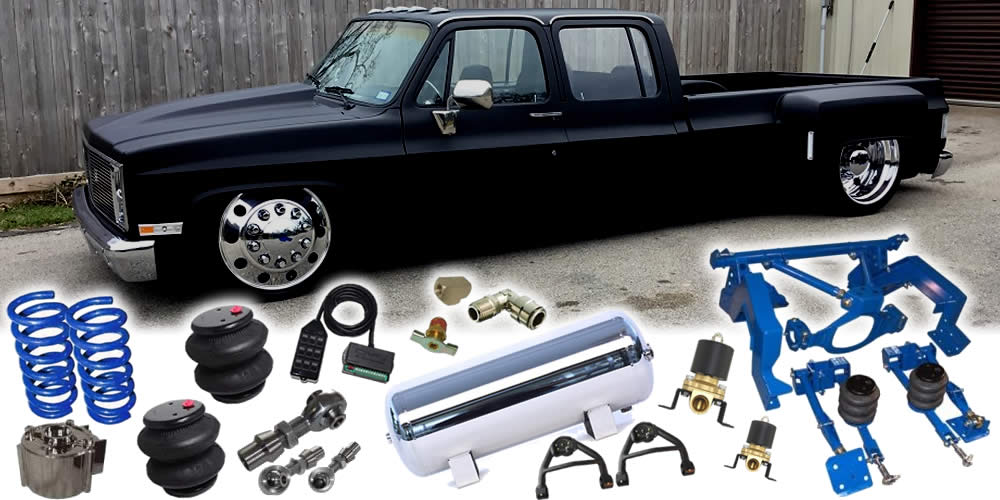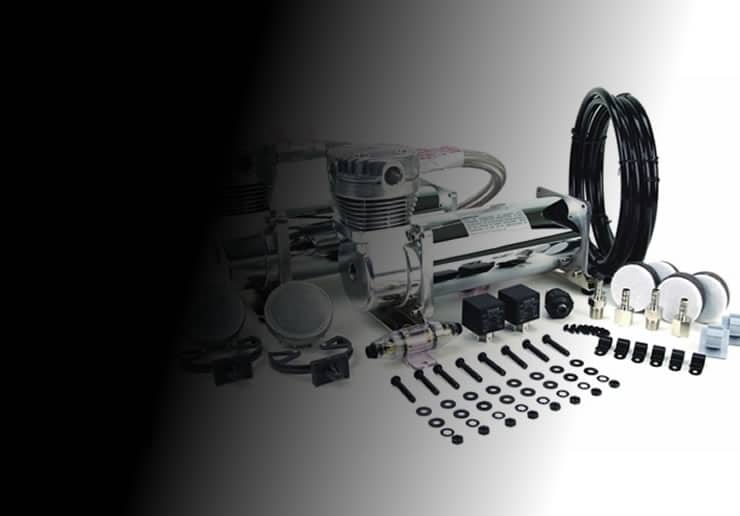Each and every air suspension system has its own pro’s and con’s when it comes to comfort, ride height adjustability and installation techniques. These very different aspects of air suspension can change dramatically depending on the application. Here we will explain the different chassis layouts, upgrade options and what makes air suspension soft or stiff so you can understand what you need. Our goal is to give you the knowledge to make an educated decision on the exact system that will fit your needs.
Comfort in air suspension is a term that is placed on air ride as a general rule, which is not quite accurate. Even the best air ride systems on the market may feel too soft or too firm to one person and not the other. A person purchasing an air suspension for a Honda Accord will not have the same ride quality as someone that is purchasing air suspension for a larger truck. This is because if the air bag volume and diameters. The number one rule in air suspension is the larger the bag the better the ride quality. As you can imagine, the air struts for a Honda Accord are much smaller due to limited space in such a compact car. This forces us to use a narrow air spring and hence a much stiffer ride quality. To get past this some companies will simply install a weaker more flexible air spring sleeve style air spring bladder instead of the dual convoluted more rigid bag to counter the stiff ride, which only creates more issues for the longevity of your custom air ride kit. Sleeve style air bags are usually strapped to the top and bottom castings and are more prone to leaking in that area. They are also thinner and simply wear out faster. Many factory air springs use this sleeve style construction. When a large area is available to install a decent volume air spring, these issues disappear. We always install the largest air spring that your specific application will allow.


Each and every vehicle is different in its own way so understanding what your vehicle uses to suspend you while your driving is extremely important. The few main styles of static suspension can be seen in the images below and are as follows: Struts, Coils, Leaf Springs or Transverse Leaf Springs

Depending on the configuration of your current chassis, different work may be required to install. Leaf springs require the installation of 4-links to delete your leaf pack entirely. Your coils get replaced with air bag brackets that in some cases can be bolted into the factory coil cups, or welded. Transverse leaf spring systems as seen in high end Chevrolet cars uses special hardware to retain the components surrounding the transverse leaf. Struts are the most basic of installations. To install most air strut assemblies it is a basic removal and swap to a custom unit, reusing the factory mounting hardware to complete the installation. Air struts are by far one of the easiest components to install when it comes to air suspension.
After you gain a bearing on the chassis parts that are needed to get your project done right the fun part begins. Air Management hardware can be customized to the individual and providing many different features depending on what your looking for. There are three considerations when choosing your air management system. This is broken down into speed, convenience and budget. If budget is your main concern then you may be able to manage with a smaller less redundant air supply that only includes a single compressor and smaller tank. This type of budget build is definitely expandable at a later time. Speed is definitely a consideration when it comes to locking down a specific management system. If you are more interested in convenience then speed, you may want to consider a digital computer controller like the Airlift 3P or 3H. These controller add a bit of a price to your complete system build but do a great job in maintaining a preset ride height with ease. Faster acting systems are not able to be computer controlled. This is due to the reaction of the control system being completely off from the valve speed and timing. Restricting your fast bag system to something more manageable is a way to integrate a preset ride height controller if you are determined to do so. Some control systems require the swap of the valve just to ensure this valve speed and computer timing is not an issue.
Looking for air management options? Check them out here:
If you need any of the chassis components some of the links below will be useful:
Complete Systems: http://x2industries.com/product-category/suspension/custom-aftermarket-air-bag-suspension-kits-parts/custom-plug-play-air-bag-suspension-kits/




